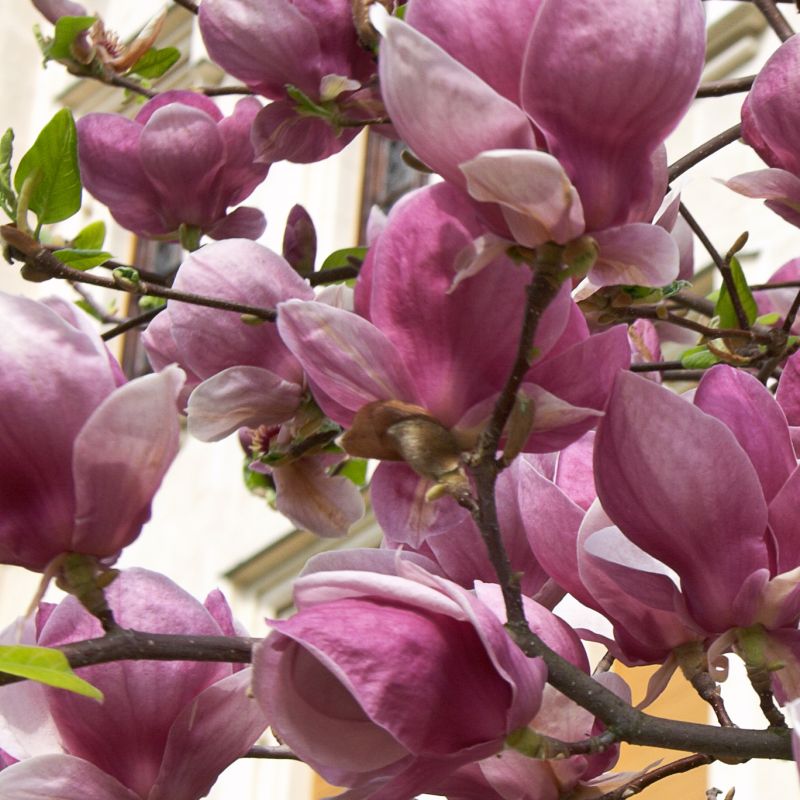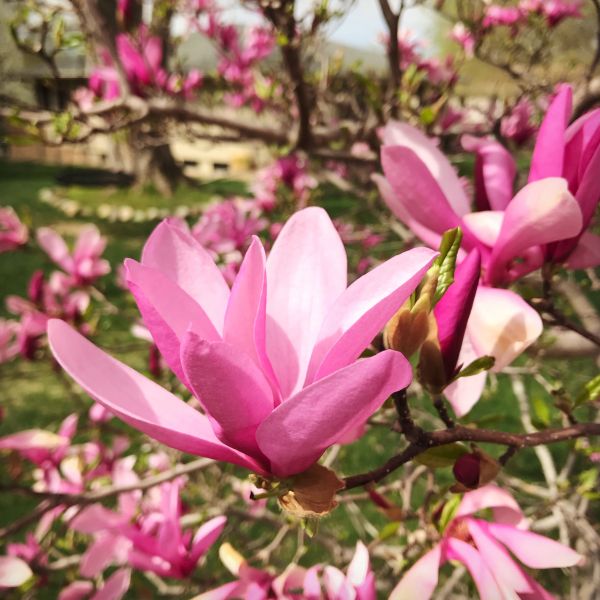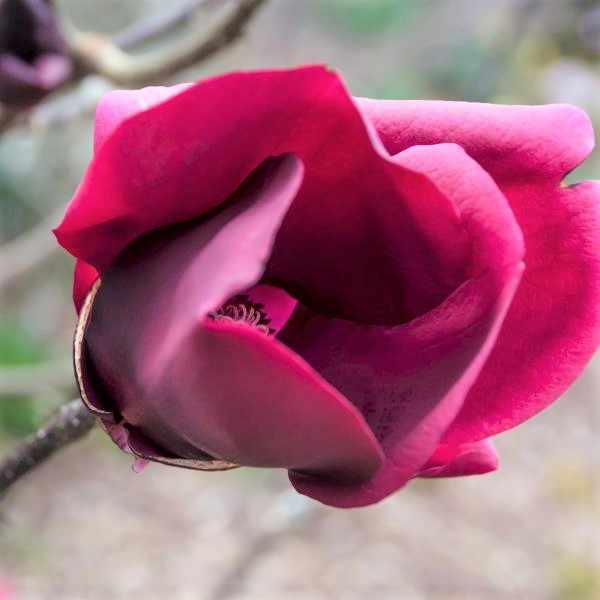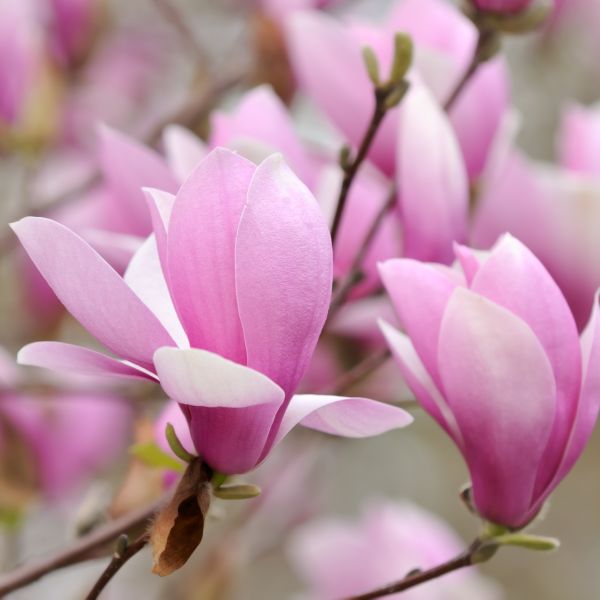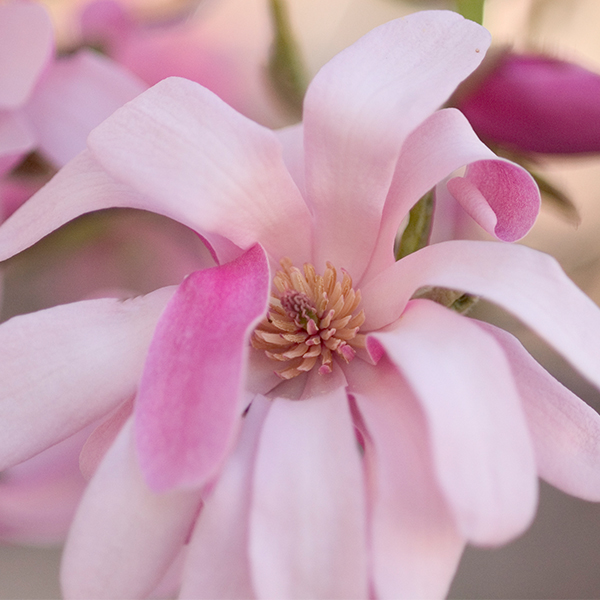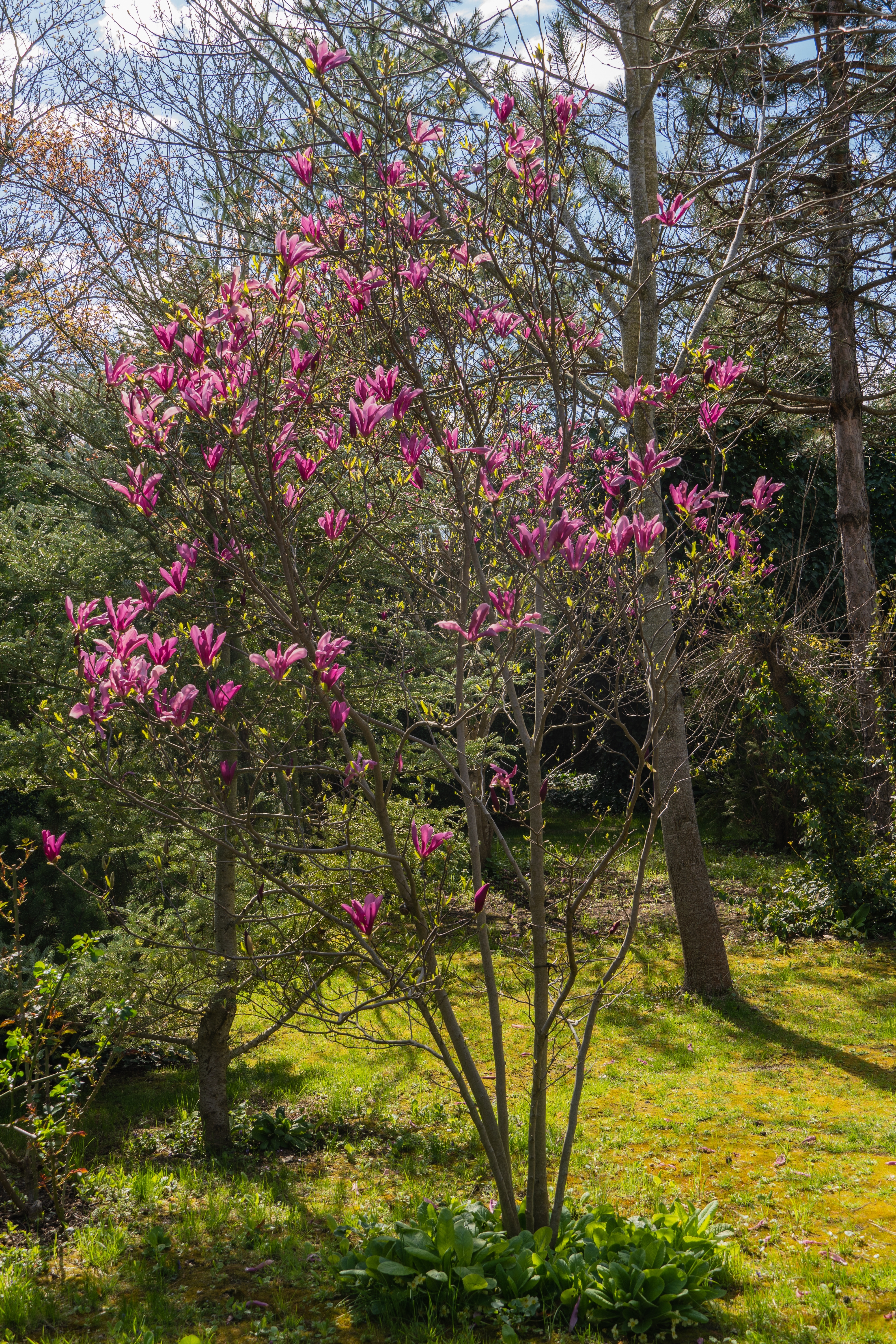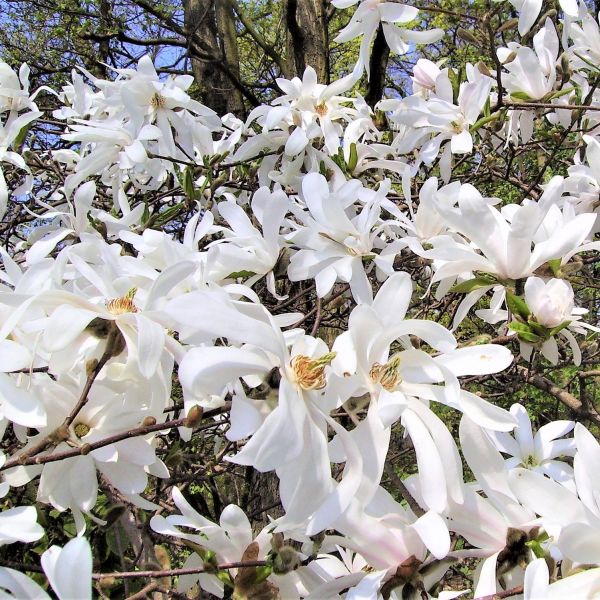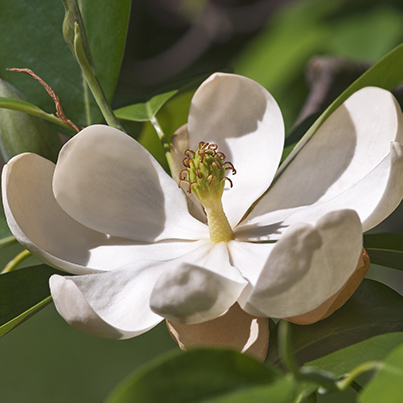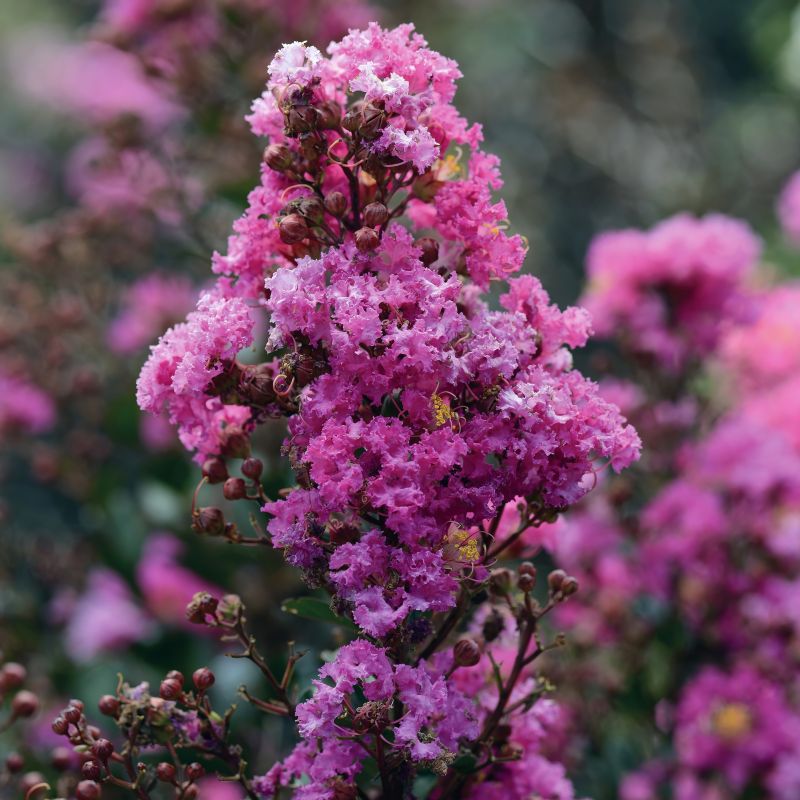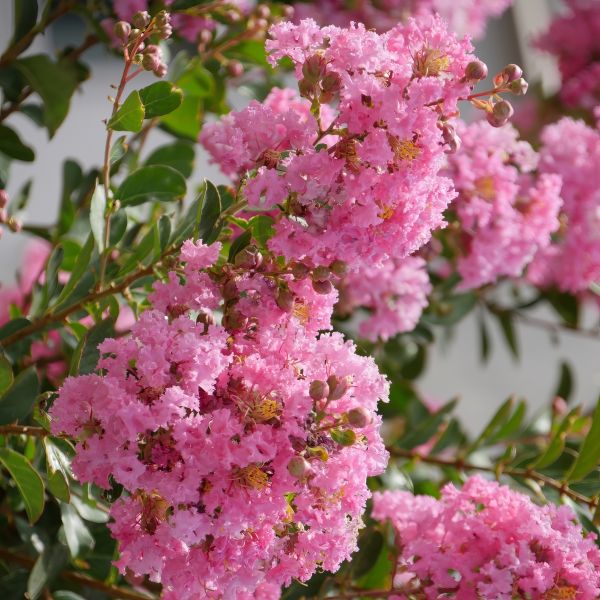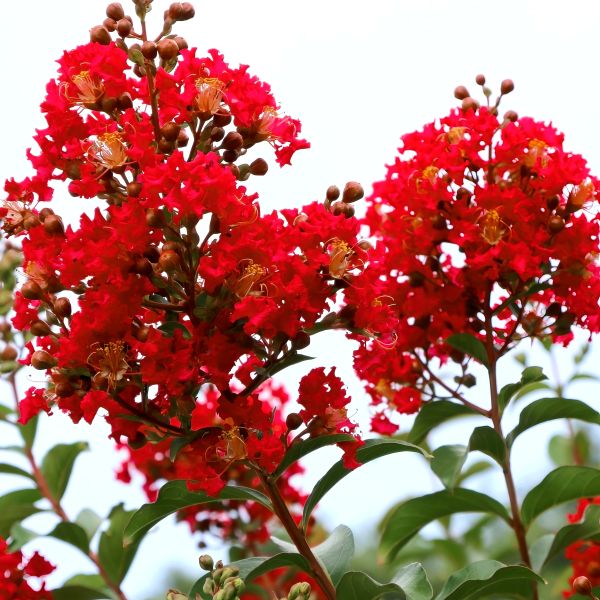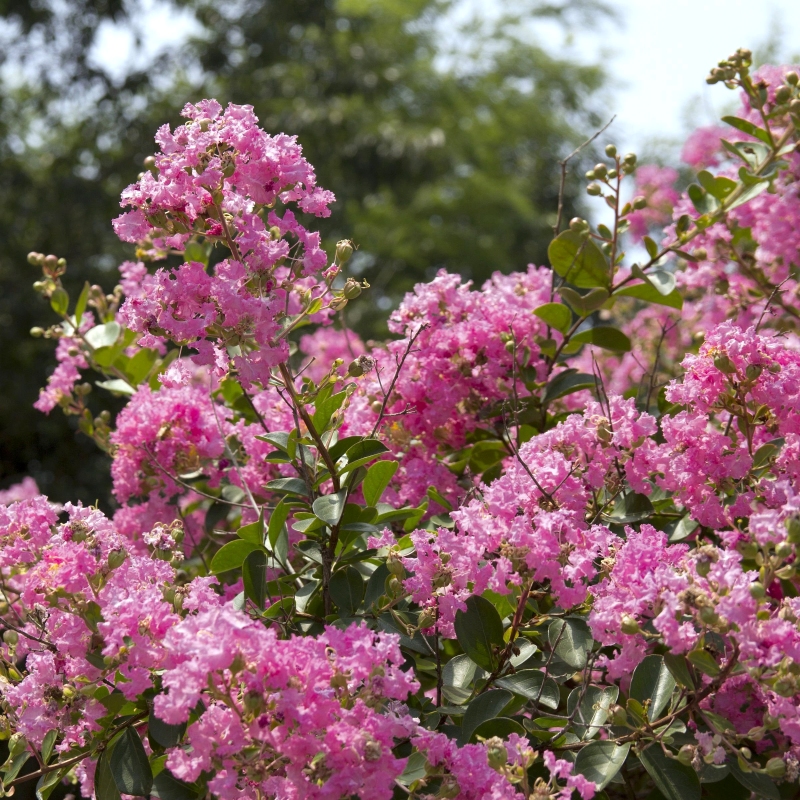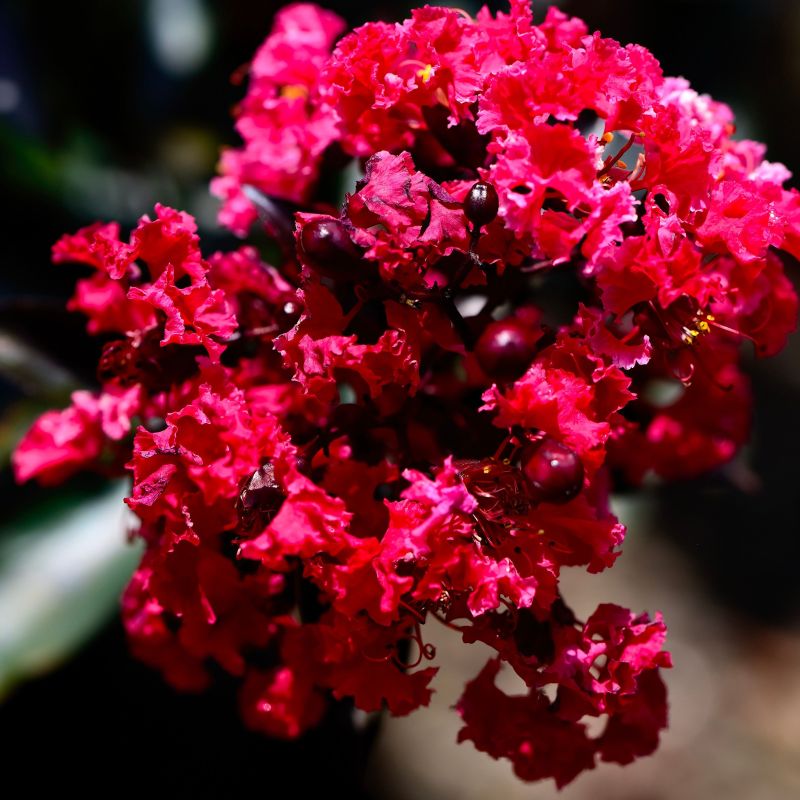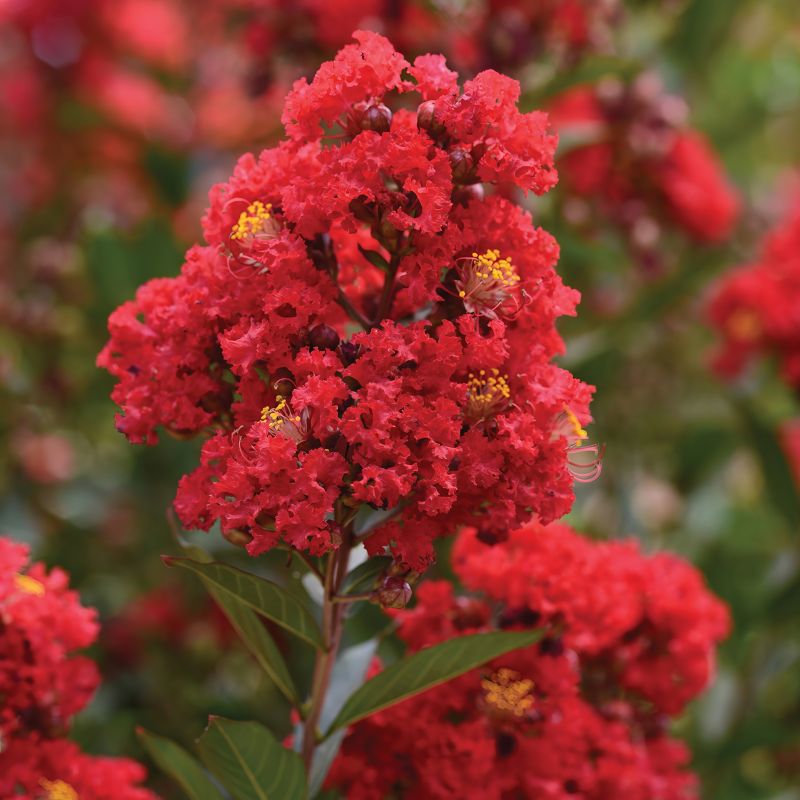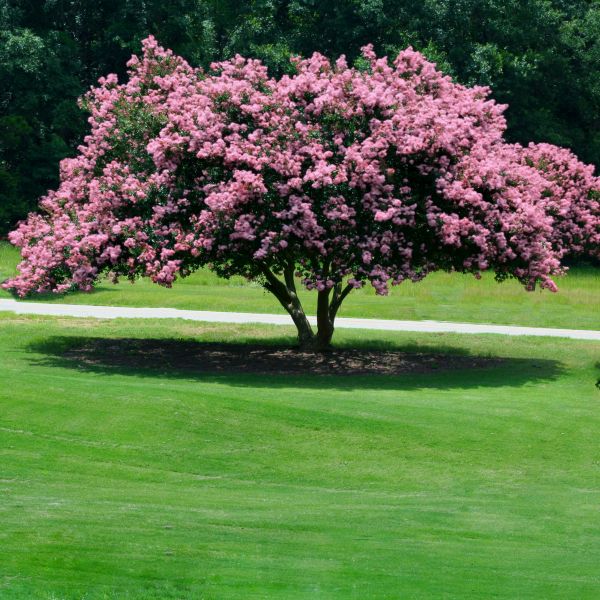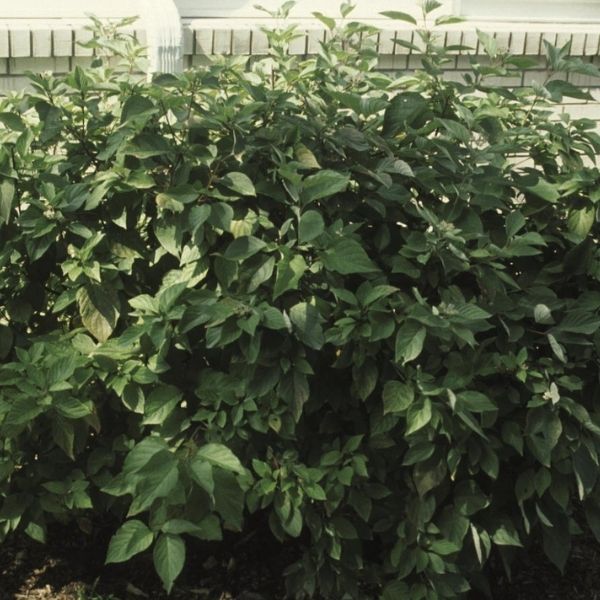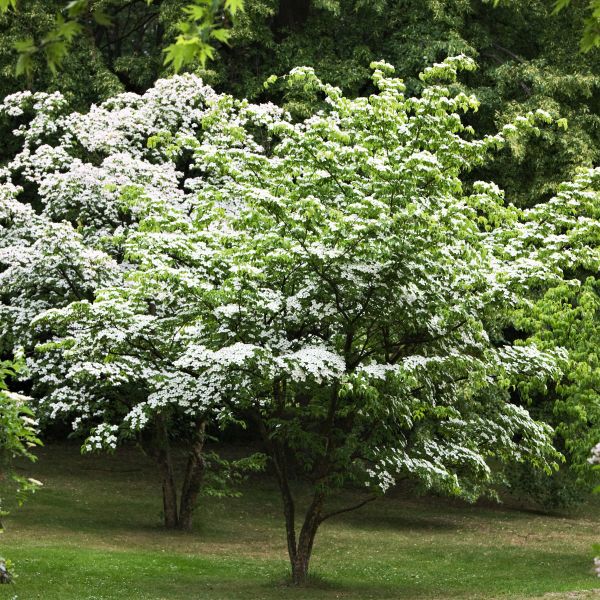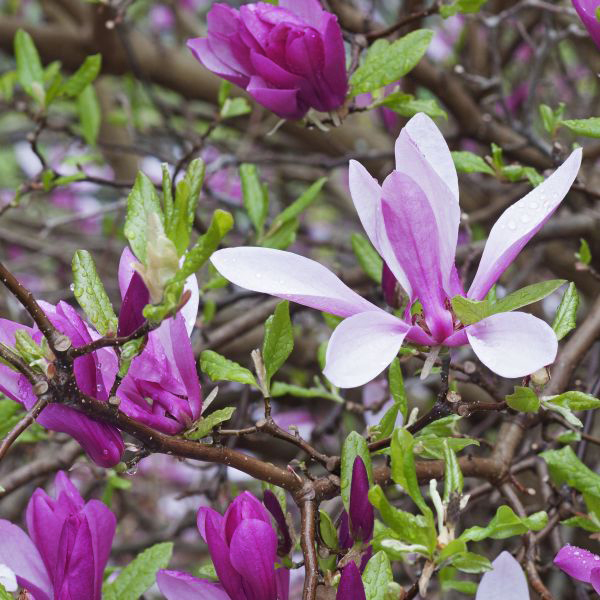
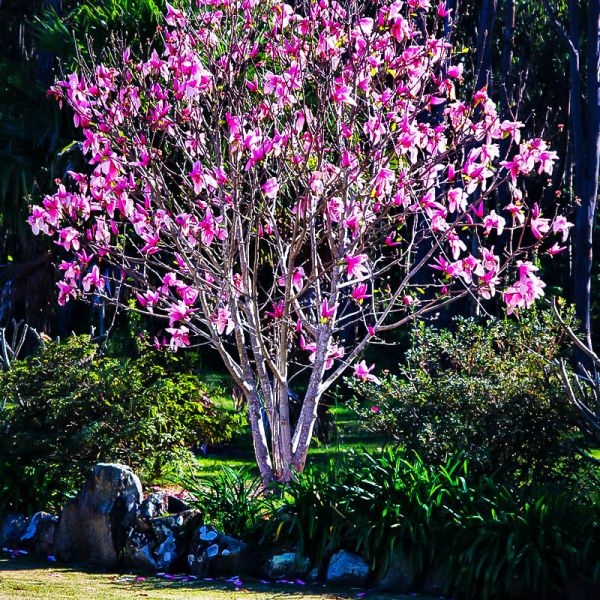
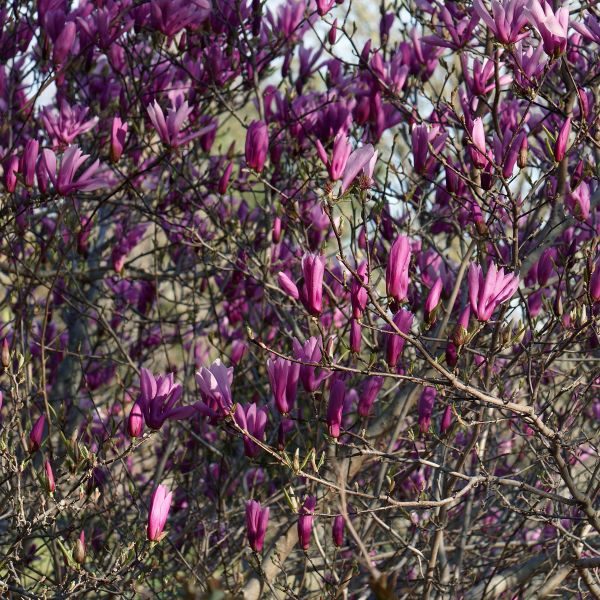
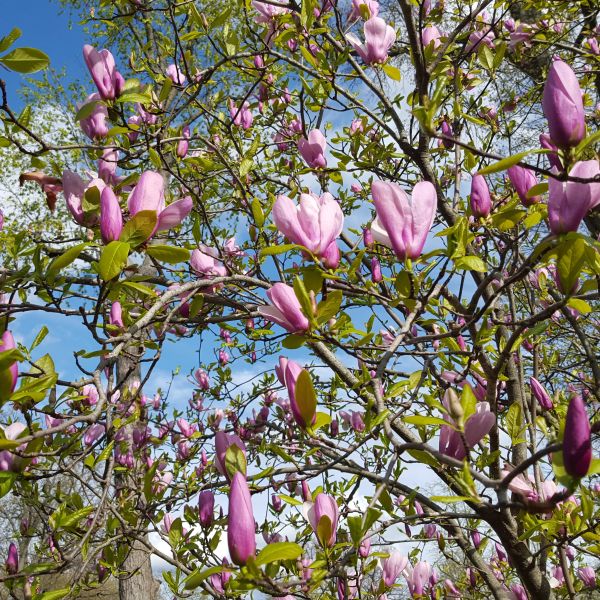
Ann Magnolia
Magnolia x 'Ann'
20 reviews
Ann Magnolia
Magnolia x 'Ann'
20 reviews
- Beautiful pink flowers that bloom in the spring
- Compact size makes it perfect for small gardens or containers
- Fragrant blossoms attract butterflies and hummingbirds
- Recommended by landscape designers for optimal fit in real yards
$94.00
$135.00
30% Off
- Ships to 43215 in 3 to 7 days
- Free Shipping Over $150
- Plant Arrival Guarantee
- In Stock
- Free Plant Consult
$200 - Landscape-Approved: Every Plant We Sell Comes With Design Expertise Behind It
- 2.5 Gallon 2-3 Feet Multi-Stem
- 2.5 Gallon Multi Stem
Not just beautiful - intentionally selected by ShrubHub's 3D landscape design team to fit real-world spaces and maximize yard potential.
Why Ann Magnolia?
Ann Magnolia is a deciduous shrub that produces gorgeous, tulip-shaped flowers in early spring. This hybrid magnolia tree was created by crossing Magnolia liliflora ‘Nigra’ and Magnolia stellata ‘Rosea’. It grows to a height of 10-15 feet, making it perfect for small gardens. Ann Magnolia blooms in a deep pink-purple color and has a pleasant fragrance. Additionally, the foliage provides great fall color.
People who loved this plant also bought
Sunlight
Full sun to part shade. Ann Magnolias prefer a location that receives at least 6 hours of direct sunlight per day, but can also tolerate some shade. It is important to provide them with enough sunlight for optimal growth and flower production.
Watering
The Ann Magnolia tree generally requires regular watering, especially during dry periods or the first few years after planting. It benefits from moist, well-drained soil but can tolerate short periods of drought once established.
Fertilizing
Ann Magnolia trees prefer a well-drained soil enriched with organic matter. A slow-release, balanced fertilizer high in nitrogen can be applied in spring to promote healthy growth. However, it is essential to follow the manufacturer's instructions and not
Portraying the fairytale style at its brilliant best calls for singling out the right tree: Ann magnolia.
The Ann magnolia tree is a member of the ‘Little Girl’: a group featuring hybrid magnolias developed in the 50s at the US national arboretum. It is a small to medium-sized deciduous tree that grows in a rounded shape up to 10 to 12 feet tall and wide, with a medium growth rate of about 13 to 24 inches per year.
What makes this tree a genuinely attractive and valuable addition to any landscape design is its magnificent magnolia flowers. Bejeweled with fragrant star-shaped blossoms that show off a captivating range of colors, the Magnolia x Ann is prized for its delicate appearance. From deep pink to purple-red and pale pink, these deciduous trees bring a surreal glow to the scene.
If you are looking for an accent design piece that gives your outdoor space the mostly-needed pop of color, you can’t go wrong with Ann magnolia trees. Even if you have a small yard that lacks a wow factor (that brings into existence a space that is as whole as a huge yard), growing the magnolia Ann is a clever way to add an eye-catching focal point that breathes life into the entire space.
Enjoying this plant’s magical blooms requires throwing in some care and patience. This medium-maintenance hardy shrub thrives best in full sun to partial shade and prefers slightly acidic, rich, and well-drained soil.
You are one click away from creating a dreamy escape. Order your Ann Magnolia now!
Plant Information:
| Botanical Name: | Magnolia x 'Ann' |
| USDA Zones: | 4 - 8 |
| Water: | Moderate to Low |
| Exposure: | Full Sun |
| Soil Needs: | Widely Adaptable |
| Mature Height: | 8 - 10 feet |
| Mature Spread: | 8 - 10 feet |



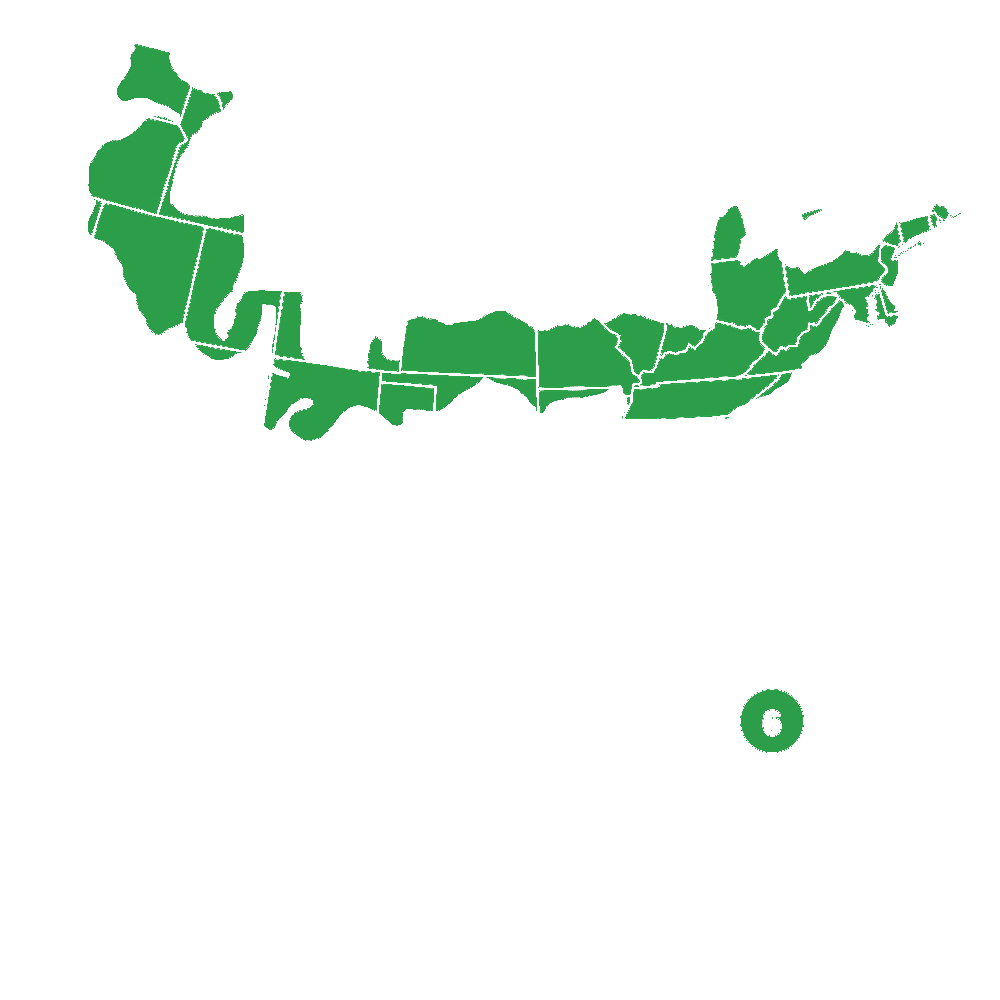

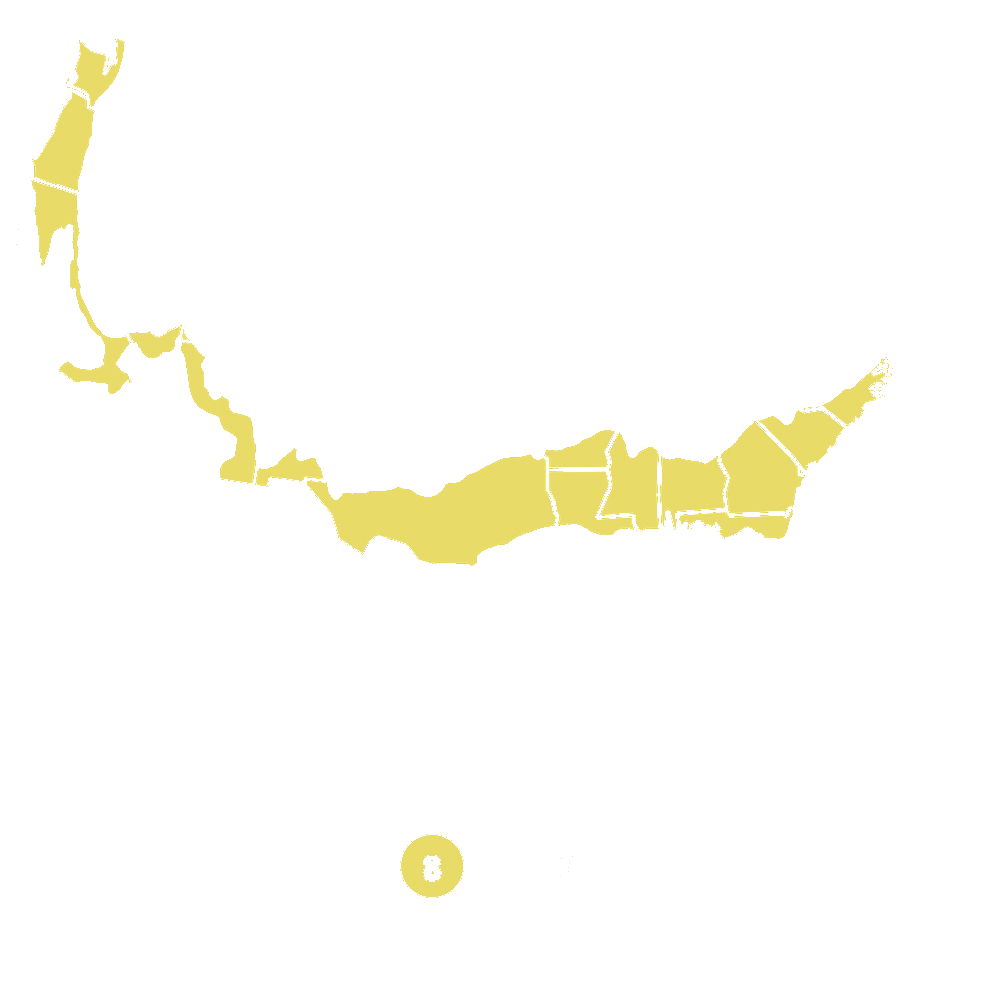
Pollination Info
Pollination Info for Ann Magnolia (Magnolia x 'Ann')
The Ann Magnolia is a hybrid magnolia cultivar that is known for its eye-catching and fragrant purple-red flowers. Here are some important pollination facts to keep in mind when growing this plant:
- The Ann Magnolia is not self-fertile. This means that it requires pollen from a different magnolia tree to produce fruit.
- In order for the Ann Magnolia to set fruit, it must be pollinated by a different magnolia cultivar that blooms at the same time.
- The best pollination partner for the Ann Magnolia is another early-blooming magnolia hybrid, such as the Jane Magnolia or the Susan Magnolia.
- It is important to plant the Ann Magnolia and its pollination partner(s) within close proximity to each other to ensure effective cross-pollination.
- Bees and other pollinators are attracted to the fragrant flowers of the Ann Magnolia and can help facilitate pollination.
- When planting an Ann Magnolia, it is important to choose a location with well-drained soil and full to partial sun exposure.
By following these pollination tips, you can help ensure that your Ann Magnolia grows and produces beautiful flowers and fruit.
FAQ
Ann Magnolia (Magnolia x 'Ann') FAQ
General Information
What is Ann Magnolia?
Ann Magnolia is a deciduous shrub that belongs to the Magnoliaceae family. It is a hybrid of Magnolia liliflora and Magnolia stellata.
What are the characteristics of Ann Magnolia?
- Height: 10-15 feet
- Spread: 10-15 feet
- Shape: Upright, multi-stemmed
- Flowers: Purple-red, 3-4 inches wide, goblet-shaped
- Blooming period: Early spring
- Leaves: Green, oval, 5-7 inches long
Where can I plant Ann Magnolia?
Ann Magnolia can be planted in a well-drained soil, preferably in a sunny or partially shaded area. It is hardy in USDA zones 4-8.
Maintenance
How often should I water Ann Magnolia?
Ann Magnolia prefers moist soil and should be watered at least once a week, especially during drought periods. However, it is important not to overwater as this can induce root rot.
How often should I fertilize Ann Magnolia?
Ann Magnolia should be fertilized once a year in early spring with a slow-release, balanced fertilizer.
When should I prune Ann Magnolia?
Ann Magnolia does not require regular pruning, but you can remove dead or damaged branches in late winter or early spring before the new growth appears.
Problems
What are the common pests and diseases that affect Ann Magnolia?
The most common pests that affect Ann Magnolia are scale insects, aphids, and spider mites. The most common diseases are leaf spot and powdery mildew.
How can I prevent pests and diseases from affecting Ann Magnolia?
- Regularly inspect the plant for signs of infestation or infection.
- Avoid overhead watering as this can promote the growth of leaf spot and powdery mildew.
- Provide adequate air circulation around the plant.
- Apply an insecticide or fungicide if necessary.
What should I do if Ann Magnolia is affected by pests or diseases?
If Ann Magnolia is affected by pests or diseases, you should take the following steps:
- Identify the problem.
- Prune off any diseased or infested branches or leaves.
- Apply an insecticide or fungicide if necessary, following the manufacturer's instructions.
- In severe cases, it may be necessary to remove the entire plant.
Planting & Care
Planting & Care for Ann Magnolia (Magnolia x 'Ann')
Planting
- Choose a location that has well-draining soil and gets plenty of sunlight.
- Dig a hole that is about twice the width of the root ball and just as deep.
- Loosen the soil around the hole and mix in some compost or other organic matter.
- Remove the tree from its container and gently loosen any tangled roots.
- Place the tree in the hole and backfill with soil, making sure the top of the root ball is level with the ground.
- Water the tree thoroughly to settle the soil and remove any air pockets.
- Mulch around the tree with a layer of organic mulch, but be sure to keep the mulch away from the trunk to prevent rot.
Care
- Water the tree regularly during the first year to help establish a strong root system.
- After the first year, the tree should be able to tolerate normal rainfall. However, it may need extra water during periods of drought.
- Fertilize the tree in early spring with a balanced fertilizer, but avoid fertilizing in late summer or fall.
- Prune the tree in late winter or early spring before new growth emerges. Remove any dead or damaged wood, and thin out any crossing or rubbing branches.
- Ann Magnolias may be susceptible to some pests and diseases, so monitor the tree regularly and treat as necessary.
Check Out These Verified Customer Reviews:
Customer Reviews
4.7 out of 5 based on 20 reviews
Thank you! Your review has been submitted.
Vibrant blooms on my Ann Magnolia tree, so happy!
The Ann Magnolia tree arrived in perfect condition and is even more beautiful than I expected!
I would highly recommend the Ann Magnolia tree to anyone looking to add some beauty to their outdoor space.
Item has been added to your cart.



